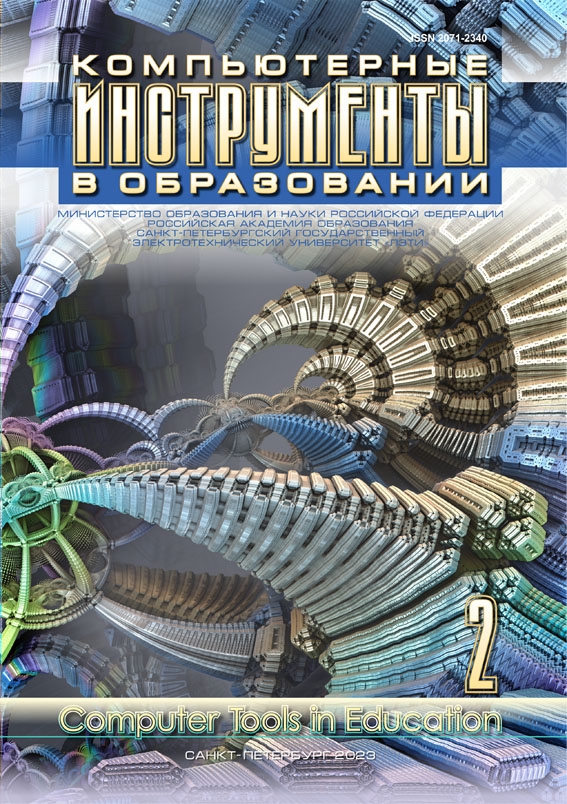The distribution function of mass density — A tool for the analysis of sphere particle systemss
Abstract
A method for characterizing sphere particle systems based on the calculation of the distri- bution of the average mass density in concentric spherical layers surrounding an arbitrary center has been developed. The effectiveness of the method has been tested on several variants of polydisperse system models obtained in two different ways and one system obtained by full-scale modeling. The distribution of the mass density for both methods of generating model systems allows you to choose the better option. For a system obtained by the field simulation method, a difference in properties is shown depending on the position of the observation center. This paper introduces the MaDiS program which implements the developed method.
The authors would like to express their deepest gratitude to Sharmain Marmita, post graduate student of the St Petersburg University.
References
W. A. Gray, The Packing of Solid Particles, London: Chapman and Hall, 1969.
R. M. German, Particle Packing Characteristics, Princeton, NJ, US: Metal Powder Industries Federation, 1989.
R. Kurita and E. R. Weeks, “Experimental study of random-close-packed colloidal particles,” Phys. Rev. E, vol. 82, pp. 011403, 2010; doi:10.1103/PhysRevE.82.011403
V. Smirnov, I. N. Deryabin, and B. A. Fedorov, “Small-angle scattering: the Guinier technique under-estimates the size of hard globular particles due to the structure-factor effect,” J. Appl. Cryst., vol. 48, no. 4, pp. 1089–1093, 2015; doi:10.1107/s160057671501078x
P. W. Schmidt, “Small-angle scattering studies of disordered, porous and fractal systems,” J. Appl. Cryst., vol. 24, no. 5, pp. 414–435, 1991; doi:10.1107/s0021889891003400
J. Zhou, Y. Zhang, and J. K. Chen, “Numerical Simulation of Random Packing of Spherical Particles for Powder-Based Additive Manufacturing,” Journal of Manufacturing Science and Engineering, vol. 131, no. 3, pp. 031004, 2009, doi:10.1115/1.3123324
O. Glatter and B. Hainisch, “Improvements in real-space deconvolution of small-angle scattering data,” J. Appl. Cryst., vol. 17, no. 6, pp. 435–441, Dec. 1984, doi:10.1107/s0021889884011894
International Union of Pure and Applied Chemistry, “Compendium of Chemical Terminology,” in goldbook.iupac.org, 2014. [Online]. Available: https://goldbook.iupac.org/files/pdf/goldbook.pdf
D. Albahari and B. Albahari, C# 5.0. Directory. Full description of the language, London: Williams, 2013.
Microsoft, “Build. Test. Deploy,” in dotnet.microsoft.com, 2023. [Online]. Available: https://dotnet.microsoft.com/
K. Chowdhury, Windows Presentation Foundation Development Cookbook: 100 Recipes to Build Rich Desktop Client Applications on Windows, Birmingham, UK: Packt Publishing, 2018.
Helix Toolkit Contributors,“Welcome to Helix Toolkit’s documentation!,” in docs.helix-toolkit.org, 2023. [Online]. Available: http://docs.helix-toolkit.org/en/latest/
OxyPlot Contributors Revision, “Welcome to OxyPlot’s documentation!,” in oxyplot.readthedocs.io, 2023. [Online]. Available: https://oxyplot.readthedocs.io/en/latest/
Ch. Ruegg et al., “Math.NET Numerics,” in ¨ numerics.mathdotnet.com, 2023. [Online]. Available: https: //numerics.mathdotnet.com/
E. Matthes, Python Crash Course, 2nd ed., Burlingame, CA, US: No Starch Press, 2019.
NumPy, “NumPy 1.25.0 released,” in numpy.org, 2023. [Online]. Available: https://numpy.org/
SciPy, “SciPy 1.11.0 released!,” in www.scipy.org/, 2023. [Online]. Available: https://www.scipy.org/
Matplotlib, “Matplotlib: Visualization with Python,” in matplotlib.org, 2023. [Online]. Available: https://matplotlib.org/
artemus-tech, “MaDiS,” in github.com, 2023. [Online]. Available: https://github.com/artemus-tech/MaDiS
H. K. Dang and M. A. Meguid, “Algorithm to Generate a Discrete Element Specimen with Predefined Properties,” International Journal of Geomechanics, vol. 10, no. 2, pp. 85–91, 2010; doi:10.1061/(asce)gm.1943-5622.0000028
W. S. Jodrey and E. M. Tory, “Computer simulation of close random packing of equal spheres,” Physical Review A, vol. 32, no. 4, pp. 2347–2351, 1985; doi:10.1103/physreva.32.2347
S. Torquato, T. M. Truskett, and P. G. Debenedetti, “Is Random Close Packing of Spheres Well Defined?,” Physical Review Letters, vol. 84, no. 10, pp. 2064–2067, 2000; doi:10.1103/physrevlett.84.2064
K. W. Desmond and E. R. Weeks, “Random close packing of disks and spheres in confined geometries,” Physical Review E, vol. 80, no. 5, pp. 051305, 2009, doi:10.1103/physreve.80.051305
T. P. Bondareva, “Computer simulation of the structure of random packing of a system of spherical particles,” Scientific reports of BelSU. Ser. Story. Political sci. Economy. Computer sci., no. 1(144), no. 25/1, pp. 79-85, 2013 (in Russian).

This work is licensed under a Creative Commons Attribution 4.0 International License.







